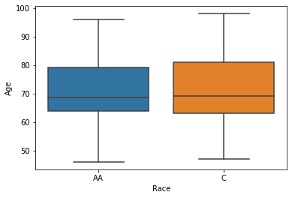Session Information
Date: Monday, November 8, 2021
Title: Osteoporosis & Metabolic Bone Disease – Basic & Clinical Science Poster (1135–1149)
Session Type: Poster Session C
Session Time: 8:30AM-10:30AM
Background/Purpose: Patients with osteoporosis are prone to suffer fragility fractures leading to an increased risk of future fractures. Detection of osteoporosis has been led by dual energy-ray absorptiometry (DEXA) as the gold standard. However, in acute fracture incidents, DEXA imaging is typically unavailable, and treatment is often delayed. In recent years scanographic bone attenuation coefficient of the first (SBAC-L1) on incidental computed tomography (CT) scans of the lumbar spine has been utilized as an alternative assessment of bone density. In particular, SBAC-L1 ≤ 145 HU correlates with osteoporotic bone density on DEXA imaging.
This study aims to assess the SBAC-L1 in HU of incidental CT scans in patients presenting with vertebra or femur fragility fractures in an academic hospital as it relates to osteoporosis.
Methods: We conducted a retrospective chart review of patients aged ≥ 45 admitted to an academic hospital for active vertebral or femur fracture between 1/1/2017- 1/31/2019, excluding traumatic and pathological fractures. Measurement of SBAC-L1 in HU was obtained on incidental CT scan imaging. Sex, race, prior and post diagnoses of osteoporosis, prior and post DEXA scan orders, use of calcium, vitamin D, and steroids were abstracted.
Results: There were 297 patients with vertebral or femur fractures from 1/1/2017- 1/31/2019. Of 297 patients, 85 deemed appropriate after excluding pathological, traumatic fractures, and lack of CT scan on the admission for fracture.
Average SBAC-L1 for all patients was 100.4 ± standard deviation (SD) of 46.5 HU. 82% of all patients had SBAC-L1 ≤ 145 HU. Caucasian patients had a lower average SBAC-L1 [99.4 HU] than African American (AA) patients [122.1 HU]. More Caucasian [n=15] had prior diagnoses of osteoporosis than AA [n=2]. Caucasian patients were prescribed Calcium and Vitamin D more often [n=39] than AA [n=3]. DEXA scan orders were placed more often in Caucasian patients [n=4] than AA patients [n=1]. Osteoporosis medications were prescribed more often in Caucasian patients [n=8] than AA patients [n=0].
Male average SBAC-L1 was 97.4 HU compared to females at 106.3 HU. Females were prescribed calcium and vitamin D more often [n=38] than males [n=8]. DEXA scan orders were placed more frequently in females [n=5] than males [n=2]. Osteoporosis medications were prescribed more often in females [n=9] than male patients [n=0].
Conclusion: 70 of 85 patients with incidental fragility fractures exhibited SBAC-L1 ≤ 145 HU. This is consistent with osteoporotic bone density on DEXA imaging supporting the use of SBAC-L1 measurement to corroborate the diagnosis osteoporosis. SBAC-L1 ≤ 145 HU can be utilized to increase inpatient diagnostic confidence of osteoporosis in the setting of acute fragility fractures to allow initiation of treatment prior to awaiting outpatient DEXA imaging.
The results here also highlight health disparities present among African Americans and males of all races when considering bone health.
 Comparison in Age for African American (AA) patients and Caucasian (C) patients
Comparison in Age for African American (AA) patients and Caucasian (C) patients
 SBAC- L1 (HU) in African American (AA) and Caucasian ( C) races
SBAC- L1 (HU) in African American (AA) and Caucasian ( C) races
To cite this abstract in AMA style:
Vaghaiwalla Z, Wasserman P, Kaeley G. Study of Vertebral and Femur Fracture Prevalence and Scanographic Bone Attenuation Coefficient of the First Lumbar Vertebra in an Academic Hospital Setting [abstract]. Arthritis Rheumatol. 2021; 73 (suppl 9). https://acrabstracts.org/abstract/study-of-vertebral-and-femur-fracture-prevalence-and-scanographic-bone-attenuation-coefficient-of-the-first-lumbar-vertebra-in-an-academic-hospital-setting/. Accessed .« Back to ACR Convergence 2021
ACR Meeting Abstracts - https://acrabstracts.org/abstract/study-of-vertebral-and-femur-fracture-prevalence-and-scanographic-bone-attenuation-coefficient-of-the-first-lumbar-vertebra-in-an-academic-hospital-setting/

